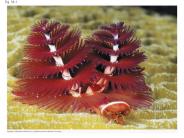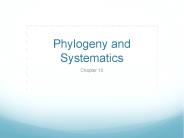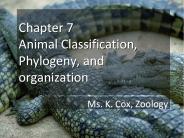Deuterostomia PowerPoint PPT Presentations
All Time
Recommended
Crinoidea (sea lilies) Asteroidea (starfishes) Ophiuroidea (brittle stars) Echinoidea (sea urchins) Holothuroidea (sea cucumbers) ...
| PowerPoint PPT presentation | free to download
A Deuterostomia eredete Protostomia ( ssz j ak) Deuterostomia ( jsz j ak) utols k z s s (utols k z s Bilateria s) a blastoporus sorsa az ...
| PowerPoint PPT presentation | free to download
SYSTEMATIKA ZOOL GIE Intern materi l pre tudentov 3. ro n ka gymn zia Mgr. Zdenka Hertelyov V vinov vetva druho ste (Deuterostomia) Kme ...
| PowerPoint PPT presentation | free to view
Chapter 34 Vertebrates A. Invertebrate Chordates and the Origin of Vertebrates The vertebrates belong to one of the two major phyla in the Deuterostomia, the ...
| PowerPoint PPT presentation | free to view
General Facts. Classified under the superphylum Deuterostomia. Adult organisms ... sent to the ampullae. ... Anus. Class Asteroidea. Around 1,800 sp. ...
| PowerPoint PPT presentation | free to view
Fig. 32-2-3 Zygote Cleavage Eight-cell stage Cleavage Blastula Cross section of blastula Blastocoel Gastrulation ... Cleavage (b) Coelom formation Coelom Key Ectoderm ...
| PowerPoint PPT presentation | free to download
Title: Slide 1 Author: ettz Last modified by: Elena Tasheva-Terzieva Created Date: 10/7/2004 10:34:57 AM Document presentation format: On-screen Show
| PowerPoint PPT presentation | free to view
Title: Diapositiva 1 Author: favini Last modified by: melgrati Created Date: 5/5/2005 10:22:23 AM Document presentation format: Presentazione su schermo
| PowerPoint PPT presentation | free to download
Now Three Domains and 6 Kingdoms. Conventional Classification of ... Hydra. sea pens. soft corals. 2 tissue layers: ectoderm, endoderm. sea anemones. jellyfish ...
| PowerPoint PPT presentation | free to download
... (4,500 species) Ectoprocts A brachiopod Brachiopoda (335 species) Rotifera (1,800 species) A rotifer (LM) A ctenophore, or comb jelly Ctenophora ...
| PowerPoint PPT presentation | free to download
Human embryo (5 weeks) Notochord attachment site for muscles ... Platypus. P. Chordata. Mammalia. Monotremes. Echidna. P. Chordata. Mammalia. Marsupials ...
| PowerPoint PPT presentation | free to view
Chapter 32 Introduction to Animal Evolution 26.16 Our changing view of biological diversity 26.1 Some major episodes in the history of life. Note that molecular ...
| PowerPoint PPT presentation | free to view
Az llatvil g soksz n s ge (32) Le rt fajok sz ma: 1,3 milli Becs lt fajsz m: 10-200milli Legkor bbi llati fossz li k: Ediacara fauna (600 milli ...
| PowerPoint PPT presentation | free to download
AN INTRODUCTION TO ANIMAL EVOLUTION ECDYSOZOA Bilateral animals are divided into two clades Protostomes Deuterostomes Protostomes are themselves divided into two ...
| PowerPoint PPT presentation | free to view
Title: Diapositiva 1 Author: favini Last modified by: melgrati Created Date: 5/5/2005 10:22:23 AM Document presentation format: Presentazione su schermo
| PowerPoint PPT presentation | free to download
... (Radiata): phyla Cnidaria Grade II (Bilateria): all other phyla Division A (Protostomia): Mouth is first opening Subdivision of Protostomes by coelom formation: ...
| PowerPoint PPT presentation | free to download
Title: Phylogeny and Systematics Author: Nancy Wheat Last modified by: NANCY WHEAT Created Date: 2/11/2006 3:37:02 AM Document presentation format
| PowerPoint PPT presentation | free to download
An introduction to animal diversity BY Carlos Paez
| PowerPoint PPT presentation | free to download
Title: Bez nadpisu Author: lastuvka Last modified by: La t vka Zden k Created Date: 9/13/2004 5:41:14 PM Document presentation format: P edv d n na obrazovce
| PowerPoint PPT presentation | free to view
None gastrovascular cavity complete digestive system. Body cavities ... Larval urochordate exhibiting paedogenesis* cephalochordate * Early sexual maturity. ...
| PowerPoint PPT presentation | free to download
Chapter 33 Invertebrates
| PowerPoint PPT presentation | free to download
Fig. 26-3 Species: Panthera pardus Genus: Panthera Family: Felidae Order: Carnivora Class: Mammalia Phylum: Chordata Kingdom: Animalia Archaea Domain: Eukarya
| PowerPoint PPT presentation | free to view
Monofilia Parafilia Polifilia CLASSIFICA O TRADICIONAL DO REINO ANIMALIA Grupos de afinidade incerta Filos Mesozoa, ...
| PowerPoint PPT presentation | free to view
Trends in Animal Evolution Symmetry ... deuterostome Digestive system None gastrovascular cavity complete digestive system Body cavities acoelomate pseudocoelomate ...
| PowerPoint PPT presentation | free to download
chapter 33 invertebrates
| PowerPoint PPT presentation | free to view
Phylum Rotifera Rotifers have a ciliated crown, the corona, that is characteristic of the phylum. Phylum Rotifera Rotifers come in a wide range of colors and shapes.
| PowerPoint PPT presentation | free to view
Chapter 34 The Origin and Evolution of Vertebrates
| PowerPoint PPT presentation | free to view
Chapter 32-34: Animal Diversity Objectives Define common characteristics amongst all animals Animals can be characterized by body plans Molecular data is ...
| PowerPoint PPT presentation | free to download
ANIMALIA Domain Eukarya, Kingdom Animalia Linnaeus classification: 2 Kingdoms (mid-1700s) Whittaker classification: 5 Kingdoms (1959) http://coralreefwatch.noaa.gov/ ...
| PowerPoint PPT presentation | free to download
Recall that Bilateralia includes two great groups of organisms Protostomia and ... Beginning of organogenesis. Significant segmentation ...
| PowerPoint PPT presentation | free to download
Lampreys (oldest living lineage of vertebrates) are a parasite in marine ... Lamprey cartilage is unlike most vertebrae in that it contains no collagen, it ...
| PowerPoint PPT presentation | free to view
tentacle-like structures =tube feet w/ suction pads. tube feet -hydraulically controlled by ... http://www.occ.cccd.edu/faculty/mperkins/zoo-review/sea-star ...
| PowerPoint PPT presentation | free to view
Radial symmetry with central digestive (gastrovascular) cavity. ... They are important as reef builders. Phoronids are marine worms. Brachiopods resemble clams. ...
| PowerPoint PPT presentation | free to view
Radiata Phylum Cnidaria Phylum Ctenophora * CERIANT RIOS An monas-tubo Tubo de pticocistos (um tipo de cnidocisto) Tent culos labiais e marginais Coluna bem ...
| PowerPoint PPT presentation | free to view
Title: Chapter 7 Animal Classification, Phylogeny, and organization Author: kelley Last modified by: coxk Created Date: 9/4/2006 3:56:46 PM Document presentation format
| PowerPoint PPT presentation | free to download
Phylogeny and Systematics Chapter 10 * * * * * * * * * * * * * * * * * * * * * * * * * * * * Taxonomy A theory of taxonomy allows us to rank taxonomic groups.
| PowerPoint PPT presentation | free to view
Evidence for gradualism. First principles: evolution. Pattern in the data. Recovery response ... Conclusions: Catastrophism coupled with gradualism ...
| PowerPoint PPT presentation | free to download
def: The process whose specific outcome is the progression of ... http://homepage.mac.com/wildlifeweb/bird/mallard/mallard_male_image_11tfk.j pg. Assumptions ...
| PowerPoint PPT presentation | free to download
Lion = top predator. Rat = omnivore. Cat = low trophic level predator. Ant = omnivore ... Predators eat their prey, such as lions, mantids, sharks etc. ...
| PowerPoint PPT presentation | free to view
To introduce you to several characteristics found in animals and the range of ... Pisces (fishes) Amphibia frogs newts etc (smooth skin) Reptiles lizards ...
| PowerPoint PPT presentation | free to download
Tunicates most resemble chordates during their larval stage ... A tunicate draws in water through an incurrent siphon, filtering food particles ...
| PowerPoint PPT presentation | free to view
INTRODUCTION TO ANIMAL DIVERSITY Chapter 32 Our Kingdom We are Animals Animals Are Species-rich Morphologically diverse lineage of multicellular organisms on the tree ...
| PowerPoint PPT presentation | free to download
One of these types of animals gave rise to vertebrates, ... Gnathostomata is subdivided into Pisces with fins and Tetrapoda, usually with two pair of limbs. ...
| PowerPoint PPT presentation | free to view
Phylogeny and Systematics Chapter 10 * * * * * * * * * * * * * * * * * * * * * * * * * * * * Taxonomy A theory of taxonomy allows us to rank taxonomic groups.
| PowerPoint PPT presentation | free to download
Practice Questions for Exam 1 Reproduction that occurs when a portion of a parent splits off to form a new individual is a. Asexual b. Budding c. Sexual
| PowerPoint PPT presentation | free to view
Animals and Animal Diversity The Nitty-gritty! Note: There is no red on this powerpoint, all non-essentials were deleted from the notes. Just imagine that everything ...
| PowerPoint PPT presentation | free to view
Panthera (lion, jaguar, leopard, tiger) Panthera leo (lion) The Linnaean hierarchy of Panthera leo (1/2): 32. Eukarya (nucleated cells) ...
| PowerPoint PPT presentation | free to view
Chordates Chapter 23 * * * * * * * * * * * * * * * * * * The Origin of Vertebrates Vertebrates evolved at least 530 million years ago, during the Cambrian explosion.
| PowerPoint PPT presentation | free to download
... * * * * * * * * * * * * * * * * * * * CLASSIFICA O TRADICIONAL DO REINO ANIMALIA Grupos de afinidade incerta Filos Mesozoa, ...
| PowerPoint PPT presentation | free to view
Invertebrates Packet #38 * * * * * * * * * * * * * * * * * * * * * * * * * * * * * * * * * * * * * * * * * * * * * * * * * * * * * * * * * * * Evolutionary Connection ...
| PowerPoint PPT presentation | free to download
This class includes bass, trout, perch, tuna and herring. ... fossil record chronicles the transition to land over a 50-million-year period ...
| PowerPoint PPT presentation | free to view
A new cavity = coelom. Schizocoely = mesodermal splitting ... A new cavity = coelom. enterocoely = mesodermal outpouchings from gut. blastocoel. blastocoel ...
| PowerPoint PPT presentation | free to view





















































